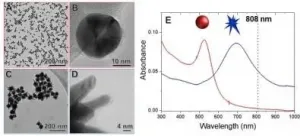(Press-News.org) The market for air purifiers is booming, but a new study has found that some air cleaning technologies marketed for COVID-19 may be ineffective and have unintended health consequences.
The study, authored by researchers at Illinois Tech, Portland State University, and Colorado State University, found that cleaning up one harmful air pollutant can create a suite of others.
Both chamber and field tests found that an ionizing device led to a decrease in some volatile organic compounds (VOCs) including xylenes, but an increase in others, most prominently oxygenated VOCs (e.g., acetone, ethanol) and toluene, substances commonly found in paints, paint strippers, aerosol sprays and pesticides. According to the EPA, exposure to VOCs has been linked to a range of health effects from eye, nose and throat irritation, headaches, loss of coordination and nausea, to damage to liver, kidney and central nervous system, and some organics can cause cancer in animals, some are suspected or known to cause cancer in humans.
The study, published this week in Building and Environment, mimicked real-world operating conditions for these ionization devices to test the effectiveness and potential to form chemical byproducts in environments similar to where we all live, work, and learn.
One of the most popular types of air purifiers on the market right now are ion-generating systems, including 'bipolar ionization' devices that electrically charge particles so they settle out of the air faster, and are generally marketed to kill bacteria, fungi, and viruses.
Understandably, the "virus-killing" capability has drawn attention and been heavily featured in advertising over the past year and led to a flood of new and revamped products on the market.
However, the study finds that the air purifier marketplace is fraught with inadequate test standards, confusing terminology, and a lack of peer-reviewed studies of their effectiveness and safety. Unlike air filtration (where air is pushed through a filter to remove airborne pollutants), there has been very little research on the effectiveness and side effects of "additive" air cleaning methods like ionizing devices.
"Manufacturers and third-party test labs commonly demonstrate their product's effectiveness using chamber tests, but these test reports often don't use experimental conditions that could show how the device actually performs in real-world conditions," said Brent Stephens, Chair of the Department of Civil, Architectural, and Environmental Engineering at Illinois Tech. "To the extent that there are testing standards for ionization and other devices, those are largely industry-led standards that remain underdeveloped at this point, focused mostly on ensuring just one pollutant, ozone, is not generated during operation."
In everyday operating conditions, ions added to occupied environments such as a school or office building can react with other compounds present in indoor air, which can potentially lead to the formation of harmful byproducts such as formaldehyde and ozone. Ions can also rapidly bind to other gases and spur the formation of new 'ultrafine' particles, which are known air pollutants. But little independent data exists on these mechanisms.
The research team conducted a series of experiments on the operation of a commercially available in-duct bipolar ionization device. Lab tests were conducted with air sampling of particulate matter and gases in a large semi-furnished chamber and in a field test with an ionizer device installed in an air handling unit serving an occupied office building. The research also found that despite small changes in particle concentrations, there was very little net effect on the overall concentration of PM2.5 in the air.
According to the EPA, particulate matter contains microscopic solids or liquid droplets that are so small that they can be inhaled and cause serious health problems. Particles less than 2.5 micrometers in diameter, also known as fine particles or PM2.5, pose the greatest risk to health as they can get deep into your lungs and some may even get into your bloodstream. Numerous scientific studies have linked fine particle pollution exposure to a range of health impacts, including premature death in people with heart or lung disease, nonfatal heart attacks, irregular heartbeat, aggravated asthma, decreased lung function, irritation of the airways, coughing or difficulty breathing.
Health impacts of air ionizers are largely unknown, although a small number of recent studies give cause for concern. In August 2020, a study concluded that exposure to negative ions was associated with increased systemic oxidative stress levels (a marker of cardiovascular health), and despite reduced indoor particulate matter concentrations, there were no beneficial changes to respiratory health.
Another recent study of air ionizers in school classrooms reduced particulate matter concentrations led to some improvements in respiratory health among 11-14 year old children, the ionizers had an adverse effect on heart rate variability (a measure of cardiovascular health), meaning that any benefit to the lungs came at a cost to the heart.
"We should have a much better understanding of these effects before widespread use of these types of devices," said Delphine Farmer, Associate Professor in the Department of Chemistry at Colorado State University and a co-lead author of the paper.
"Without peer-reviewed research into the health impacts of these devices, we risk substituting one harmful agent for another," said Stephens. "We urge others to follow guidance from organizations like the U.S. EPA and ASHRAE, which generally recommend the use of established, evidence-based measures to clean indoor air, including high efficiency particle filtration and enhanced ventilation, in addition to face coverings and physical distancing, to help reduce airborne transmission of COVID-19."
INFORMATION:
The authors of this research are Yicheng Zeng, Prashik Manwatkar, Marina Beke, Insung Kang, Akram Ali, Mohammad Heidarinejad, and Brent Stephens from Illinois Tech, Aurélie Laguerre and Elliott Gall from Portland State University, and Delphine Farmer from Colorado State University.
Those who have persistent trouble sleeping may have an especially difficult grieving process after the death of a loved one, a new study co-authored by a University of Arizona researcher finds.
Most people who lose a close friend or family member will experience sleep troubles as part of the grieving process, as the body and mind react to the stress of the event, said study co-author Mary-Frances O'Connor, a professor in the UArizona Department of Psychology.
But O'Connor and her collaborators found that those who had persistent sleep challenges before losing someone were at higher risk for developing complicated grief after a loss. Complicated grief is characterized by a yearning for a lost loved one ...
It would surprise no one that pursuing a graduate degree can be a stressful endeavor, and for students who are transgender and nonbinary (TNB), the atmosphere can become toxic, according to University of Houston researcher Nathan Grant Smith. In a new paper published in Higher Education, Smith provides an analysis of current literature pertaining to TNB graduate student experiences and suggests interventions in graduate education to create more supportive environments for TNB students.
"Nearly 50% of graduate students report experiencing emotional or psychological distress during their enrollment in graduate school. Levels of distress are particularly high for transgender ...
It has long been understood that a parent's DNA is the principal determinant of health and disease in offspring. Yet inheritance via DNA is only part of the story; a father's lifestyle such as diet, being overweight and stress levels have been linked to health consequences for his offspring. This occurs through the epigenome - heritable biochemical marks associated with the DNA and proteins that bind it. But how the information is transmitted at fertilization along with the exact mechanisms and molecules in sperm that are involved in this process has been unclear until now.
A new study from McGill, published recently in Developmental Cell, has made a significant advance in the field by identifying how environmental information is transmitted by ...
Lightning strikes -- perhaps a quintillion of them, occurring over a billion years -- may have provided sparks of life for the early Earth.
A new study by researchers at Yale and the University of Leeds contends that over time, these bolts from the blue unlocked the phosphorus necessary for the creation of biomolecules that would be the basis of life on the planet.
"This work helps us understand how life may have formed on Earth and how it could still be forming on other, Earth-like planets," said lead author Benjamin Hess, a graduate student in Yale's Department of Earth & Planetary ...
Lightning strikes were just as important as meteorites in creating the perfect conditions for life to emerge on Earth, geologists say.
Minerals delivered to Earth in meteorites more than 4 billion years ago have long been advocated as key ingredients for the development of life on our planet.
Scientists believed minimal amounts of these minerals were also brought to early Earth through billions of lightning strikes.
But now researchers from the University of Leeds have established that lightning strikes were just as significant as meteorites in performing this essential function and allowing life to manifest.
They say this shows that life could develop on Earth-like planets through the same mechanism at any time if atmospheric conditions are right. The research ...
The activity of enzymes in industrial processes, laboratories, and living beings can be remotely controlled using light. This requires their immobilization on the surface of nanoparticles and irradiation with a laser. Near-infrared light can penetrate living tissue without damaging it. The nanoparticles absorb the energy of the radiation and release it back in the form of heat or electronic effects, triggering or intensifying the enzymes' catalytic activity. This configures a new field of study known as plasmonic biocatalysis.
Research conducted at the University of São Paulo's Chemistry Institute (IQ-USP) in Brazil investigated the activity of enzymes immobilized on gold ...
FLAGSTAFF, Ariz. -- March 16, 2021 -- The findings of a recent analysis conducted by the Translational Genomics Research Institute (TGen), an affiliate of City of Hope, suggest that ecosystems suitable for harboring ticks that carry debilitating Lyme disease could be more widespread than previously thought in California, Oregon and Washington.
Bolstering the research were the efforts of an army of "citizen scientists" who collected and submitted 18,881 ticks over nearly three years through the Free Tick Testing Program created by the Bay Area Lyme Foundation, which funded the research, producing a wealth of data for scientists to analyze.
This new study builds on initial research led by the ...
March 16, 2021, Mountain View, CA - In a comment published today in Nature Astronomy, Dr. Nathalie Cabrol, Director of the Carl Sagan Center for Research at the SETI Institute, challenges assumptions about the possibility of modern life on Mars held by many in the scientific community.
As the Perseverance rover embarks on a journey to seek signs of ancient life in the 3.7 billion years old Jezero crater, Cabrol theorizes that not only life could still be present on Mars today, but it could also be much more widespread and accessible than previously believed. Her conclusions are based on years of exploration of early Mars analogs in extreme environments in the Chilean altiplano and the Andes funded ...
Billions of years ago, the Red Planet was far more blue; according to evidence still found on the surface, abundant water flowed across Mars and forming pools, lakes, and deep oceans. The question, then, is where did all that water go?
The answer: nowhere. According to new research from Caltech and JPL, a significant portion of Mars's water--between 30 and 99 percent--is trapped within minerals in the planet's crust. The research challenges the current theory that the Red Planet's water escaped into space.
The Caltech/JPL team found that around four billion years ago, Mars was home to enough water to have covered the whole planet in an ocean about 100 to 1,500 meters deep; a volume roughly ...
URBANA, Ill. - Corn didn't start out as the powerhouse crop it is today. No, for most of the thousands of years it was undergoing domestication and improvement, corn grew humbly within the limits of what the environment and smallholder farmers could provide.
For its fertilizer needs, early corn made friends with nitrogen-fixing soil microbes by leaking an enticing sugary cocktail from its roots. The genetic recipe for this cocktail was handed down from parent to offspring to ensure just the right microbes came out to play.
But then the Green Revolution changed everything. Breeding tools improved dramatically, leading to faster-growing, higher-yielding hybrids than the world had ...





